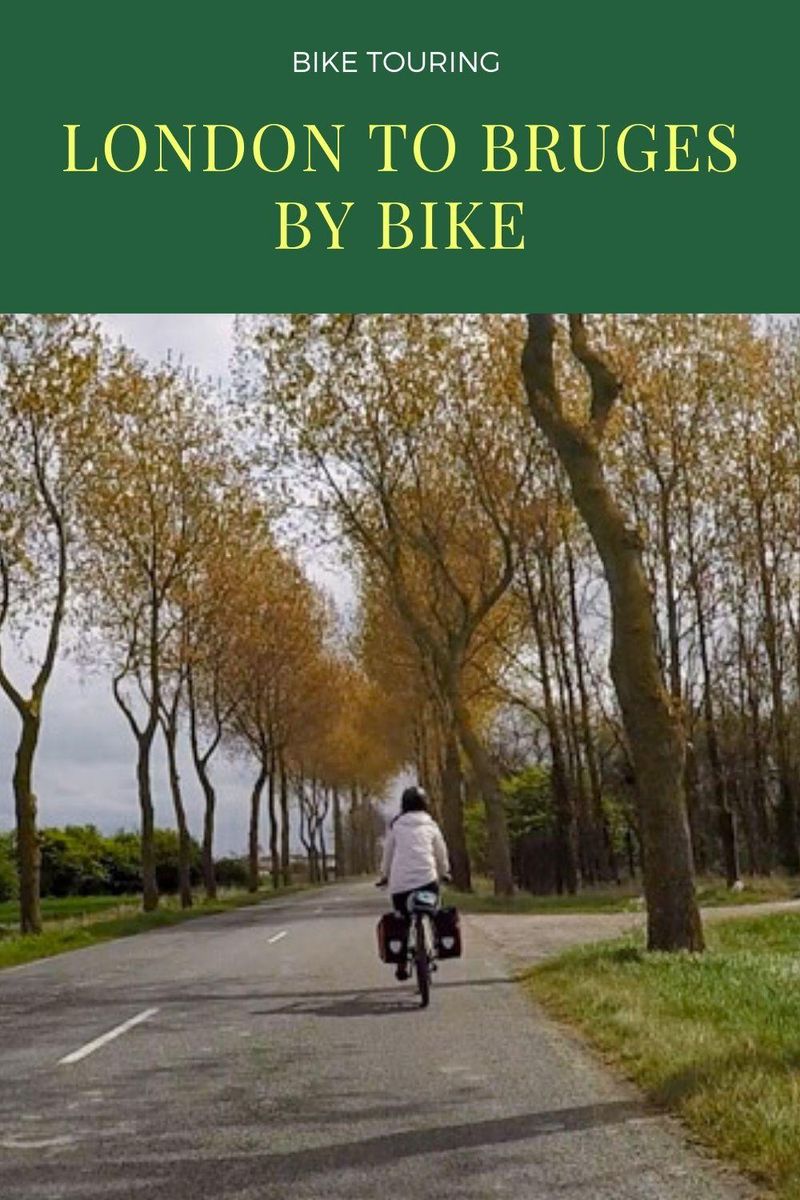Cycling from London to Bruges was part of our planned trip cycling through six European countries. We cycled through the UK, France, Belgium, the Netherlands, Germany and Luxemburg to raise money for the charity War Child.
We have already posted a series of videos about our trip on our YouTube channel, but here I am going to share more detailed advice and more tips about this segment of our trip.

You can also read about "Bike Touring Gear: What to bring on a Bike Tour"
This post contains affiliate links and if you click one I may receive a small commission at no extra cost to you.
Cycling from London to Dover
When you plan to cycle from the UK to Belgium, you should go to Dover first and then take a ferry to France. Cycling from London to Dover can be done in a day. The length of your route depends on where in London you start your journey.

In my previous article, I explained how we began our journey from our home in west London, and how we decided to cycle only one hour inside the city and then taking a 30-minute train ride to Lenham in Kent from Victoria Train Station. You can also go to Maidstone in Kent and cycle to Dover from there.
According to Google Maps, it should take you 4 hours to reach Dover, but I would say you can give it more time if it is the first time you are cycling on this route. You need to stop for food, take some photos and you might even get lost a few times. Plus, when you have panniers on your bike, your bicycle will be heavier and you will probably be slower than normal. In the end, you are on a cycling holiday to enjoy it, why should you rush it. I also recommend you to buy lightweight and waterproof panniers.
Dover to Calais by ferry
It is highly recommended to book the ticket for the ferry in advance. When you travel with your bicycle in a group you should book the ferry ticket separately for each bicycle.
There are two ferry-companies operating the Dover-Calais ferry route and the ride takes less than 2 hours.

We were not sure how long it would take us to arrive in Dover. It was the first day of our bike tour and we didn’t want to risk missing the ferry. This is why we planned to stay a night in Dover and had an early start the next morning by taking the ferry. You can do the same, or opt for taking the ferry and stay your first night in France instead.
Finding the port is quite easy when you are in Dover. You will find a cycling lane that leads you to the border and then the ferry. On our next day, we started early in the morning to take one of the first ferries to Calais.
After crossing the border we had to join a queue to enter the ferry, as cyclists we had the privilege to be in front of the queue and we were the first ones to get onto the ferry before cars and lorries. But when we arrived in Calais the situation was reversed, because of health and safety regulations we had to be almost the last ones to leave the ferry.
On the ferry, you can lock your bike in the parking deck and head upstairs where you can find cafes and shops. I ordered a hot chocolate and Bruno went for a cappuccino with two chocolate croissants. They were pretty terrible, especially the coffee. We were glad we only had this one meal on the ferry.
Cycling from Calais to Bruges
When we got off the ferry in France, we noticed a sign in English which said: “keep your right”. This was a good reminder to start cycling on the right side of the roads since we were in a new country.
We cycled north-east for 20 km on a flat and quiet road. Cycling can be a little boring when the scenery doesn’t change much and the road is completely flat, but we had no choice but to continue riding.
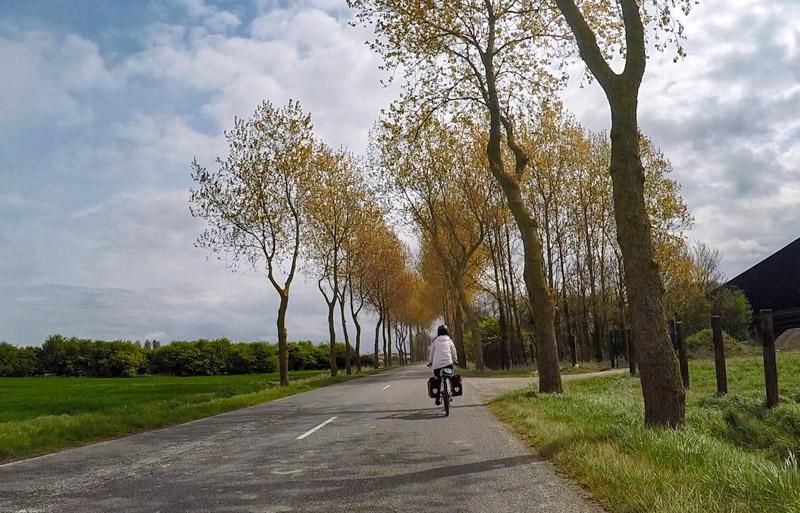
Our route took us to Dunkirk, where cycling on some of the route was not very pleasant. There was trash everywhere on both sides of the path, which made us push our pedals even faster than normal. We only had a short stop at a Lidl supermarket to buy some water and food, we then left Dunkirk and stopped in a park for lunch.
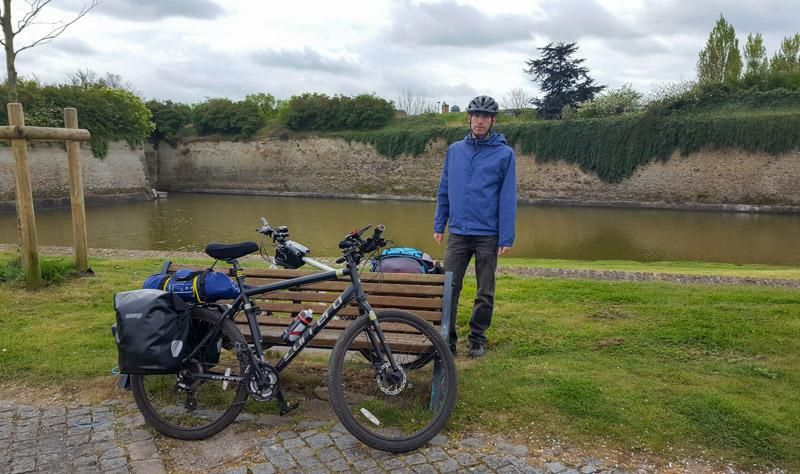
Once we got away from the port towns the roads got better and were much cleaner. We got to the France-Belgium border at around 4 pm, so I decided to find a campsite to stay for the night. Most campsites won’t accept check-ins after 5 pm so if you are late it’s better to get in touch with them by phone.
The Campsite of Camping du Perroquet was a huge one, with some nice shower facilities next to the beach. We pitched our tent and went to a local restaurant nearby for dinner where we had some Salade de Crevettes and steak.
On the next day, we started early, and after just a few minutes, we crossed the border. Cycling in Belgium is relaxing and safe. Belgium is one of the most bike-friendly countries in the world. There are cycling lanes everywhere, the country is flat, and Belgians respect cyclists on the road.
We continued cycling towards Bruges on a very flat path. We had a short stop in Middelkerke for a coffee and a Belgian hot chocolate, which is hot melted chocolate served with hot milk separately that you can mix yourself. Mixing them is really satisfying.
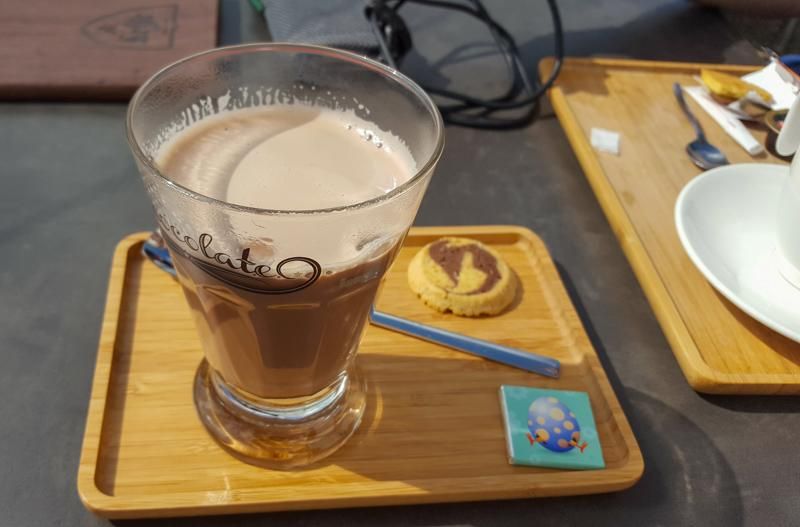
On our way to Burges, we passed some farms and green flat fields; we saw some deer, cows, sheep and horses. Some parts of the path were extremely quiet, a little bit boring but absolutely beautiful.

The road was getting busier and busier as we approached Bruges. We arrived in the city centre in the afternoon. Cycling in a busy city like Bruges isn’t much fun since you have to avoid tourists carelessly roaming around.
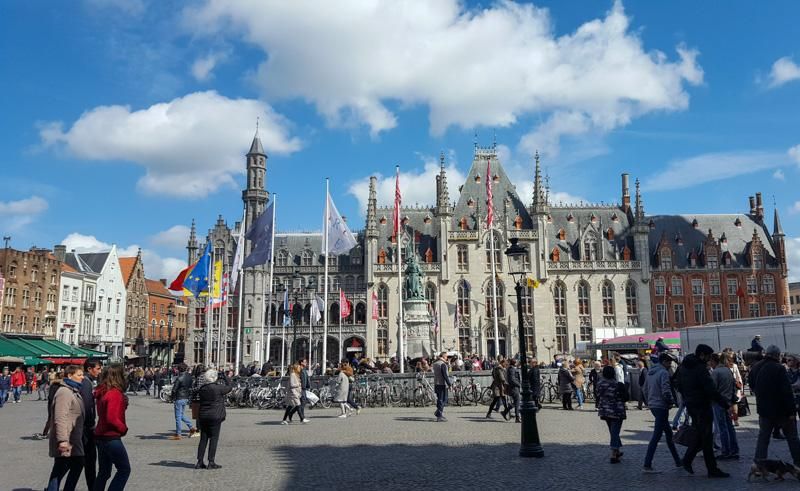
Cycling From London to Bruges can be done in a couple of days, but you need to go quite fast and have fewer stops, I would recommend you not to push it to be able to enjoy your ride more.
We stayed in Burges for an hour and then continued cycling next to the river in Damme towards the east. We spent the night in a campsite near Sluis in the Netherlands.

